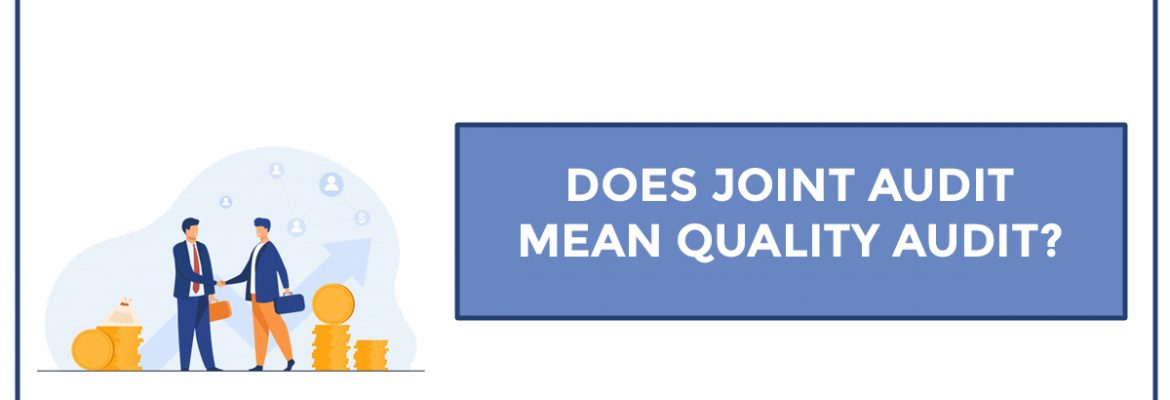Each time there is a financial scam, Statutory Auditors come into limelight. What also comes into focus is whether joint audits are the solution to such scams.
Joint audits are audits where more than one audit firm is appointed to conduct the audit of a company. They are used internationally in countries such as France, Germany, Switzerland, South Africa and UK. In France, joint audit became a legal requirement in 1966, while in South Africa, it is mandatory for firms operating in the financial services sector. These countries are of a view that joint audit increases the audit quality and stakeholders get additional assurance by a second audit firm. However, countries such as Denmark abandoned joint audit in 2005, after the Danish authorities and Parliament of Denmark stated that joint audits were associated with ‘unnecessary high audit costs’.
In India, joint audits are mandatory in certain sectors such as in the public sector, including for public sector banks, and the insurance sector for all insurance companies. In 2016, a three-member expert panel was set up by the Ministry of Corporate Affairs (MCA) on various issues related to audit firms. One of them was introduction of joint audit. The committee had rejected the proposal of joint audit as it was seen to be adding to costs.
It is argued by some that joint audit improves the overall state of affairs of a company. This is premised on the theoretical model that instead of one auditor looking at the financials of a company, there would be two auditors doing so, which could result in better and in-depth scrutiny of the financials. However, this is rarely the case. In the system of joint audit, there is always a possibility that the auditors would divide the scope of work amongst themselves, resulting in both of them dealing with different parts of the audit. This would not result in any substantive gain in the quality of the process. This is usually because any two auditors are unlikely to review each other’s work.
Another argument that is often voiced in favour of a joint audit system is that it will reduce the oligopoly of the Big 4, and give a chance to the smaller firms. But this is a rebuttable presumption. It is often proposed that a joint audit could include one Big 4 firm and one smaller firm (also known as a tier II firm). However, this leads to other kinds of questions such as whether tier II firms in India have the competence and manpower to collaborate with Big 4? It is also believed by some that two auditors, who are competitors, may not always co-operate with each other during the audit.
According to various studies done on joint audit, there is no conclusive evidence that joint audits produce better quality of reports, but there is conclusive evidence that they do increase the cost of audit for the companies. For any audit process to be effective, there are two important parameters – auditors’ competence and auditors’ independence. A single auditor is capable of giving a quality audit report if these are followed. Further, an auditor needs professional scepticism, which too cannot be guaranteed by a joint audit.
Even if the provision for joint audit is not mandatory for all companies in India, the Companies Act, 2013 provides for the provision of auditor’s rotation. Companies can always consider an overlap of a year when an existing auditor is rotating out after completing his/her term. This would help get the benefit of a joint audit, without adding too much to costs. This would also help the new firm to better understand the functioning of the company, and to identify any shortcomings in the existing audit process, which can be improved in the next financial year.
Instead of focussing on joint audits, the focus should be on holding the auditor accountable. This has to be done by the Audit Committee, the Board and the shareholders.
– Prerna Mohan

